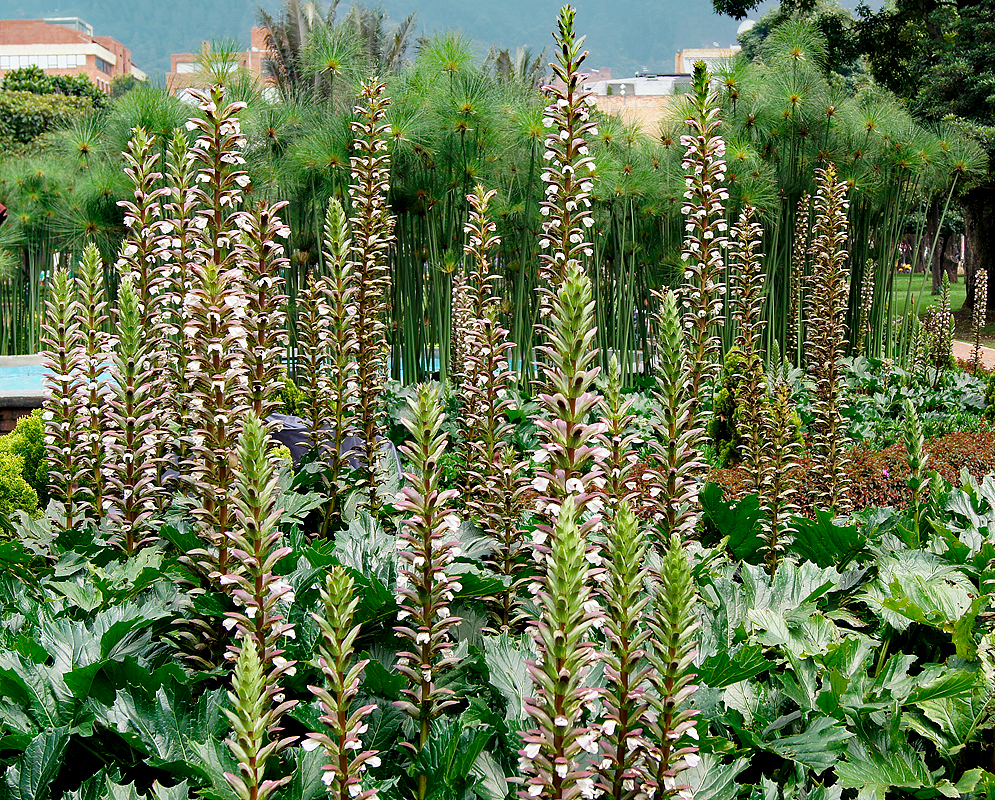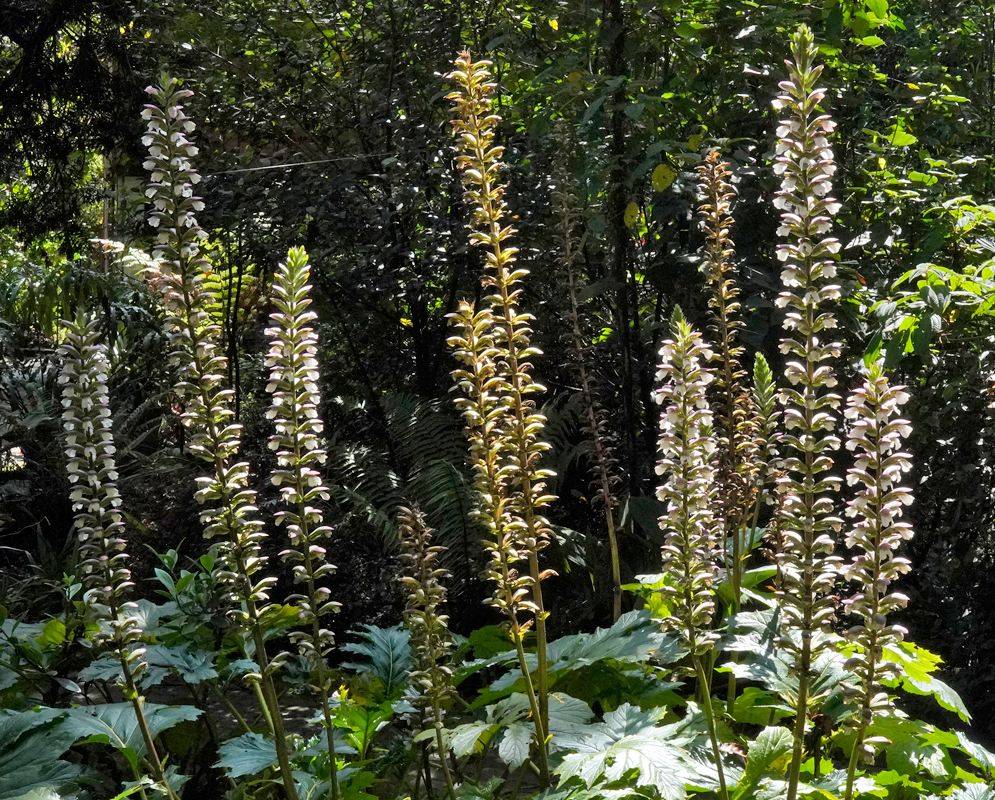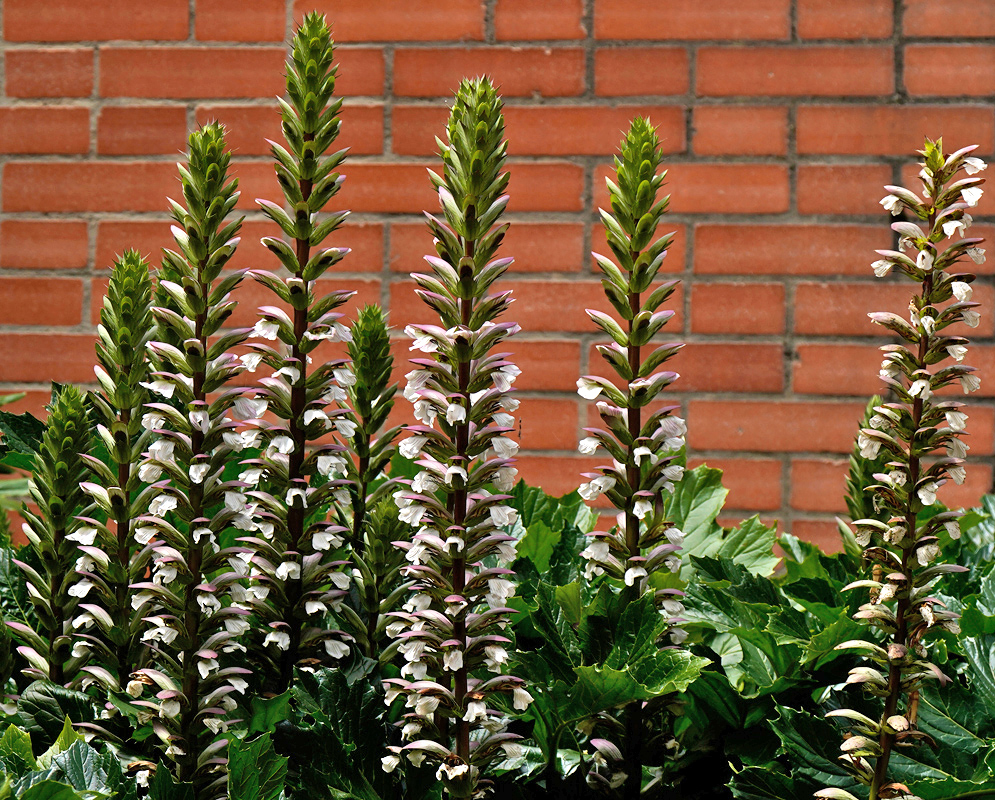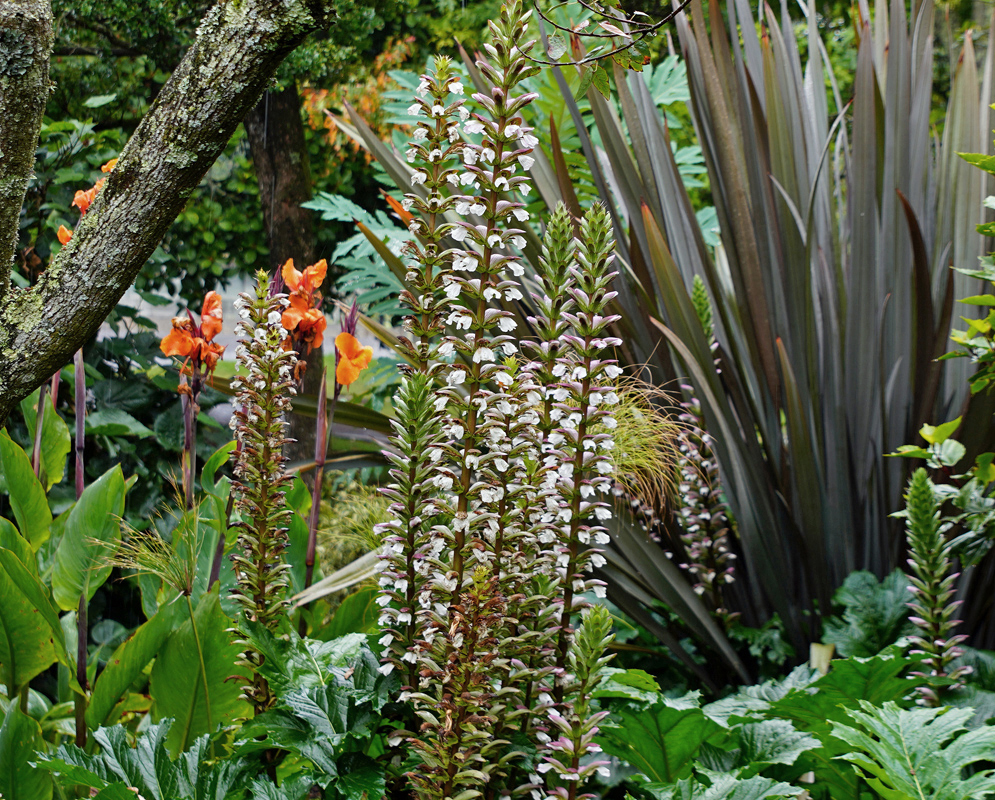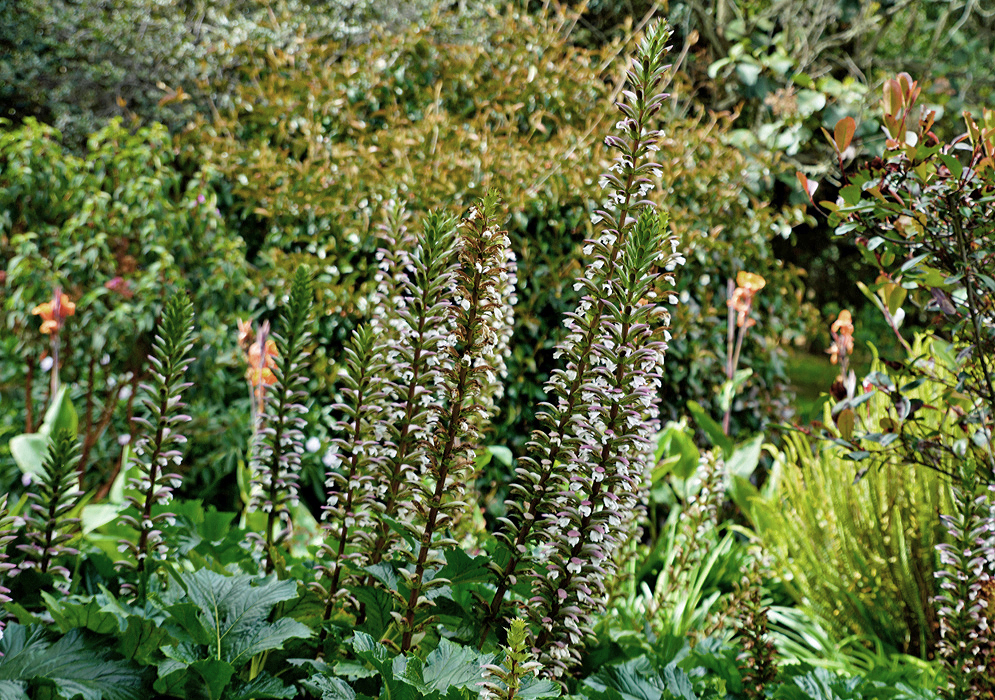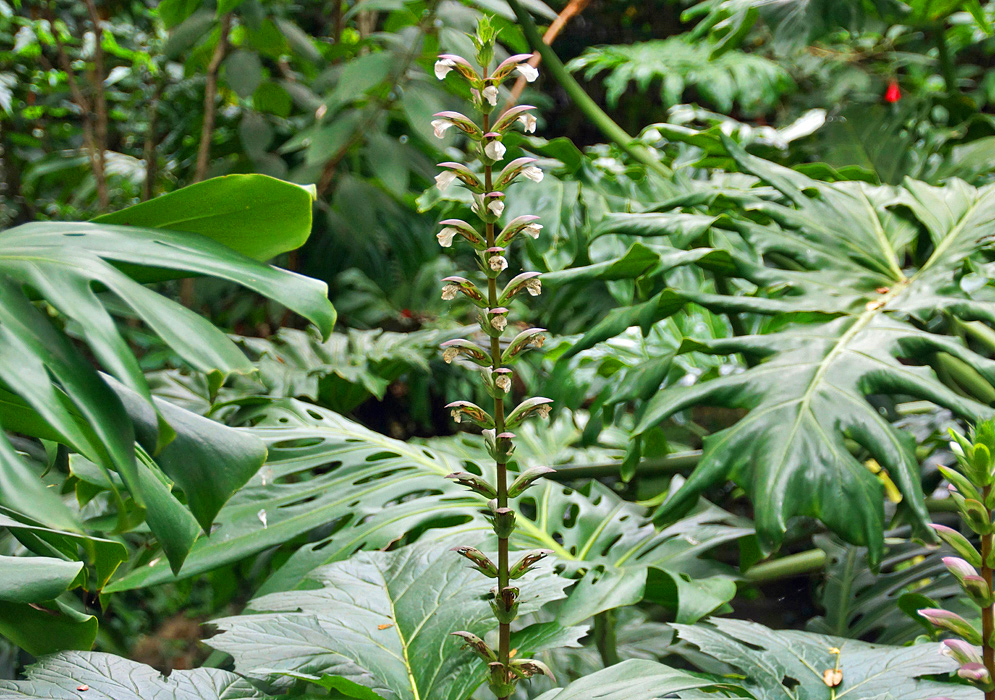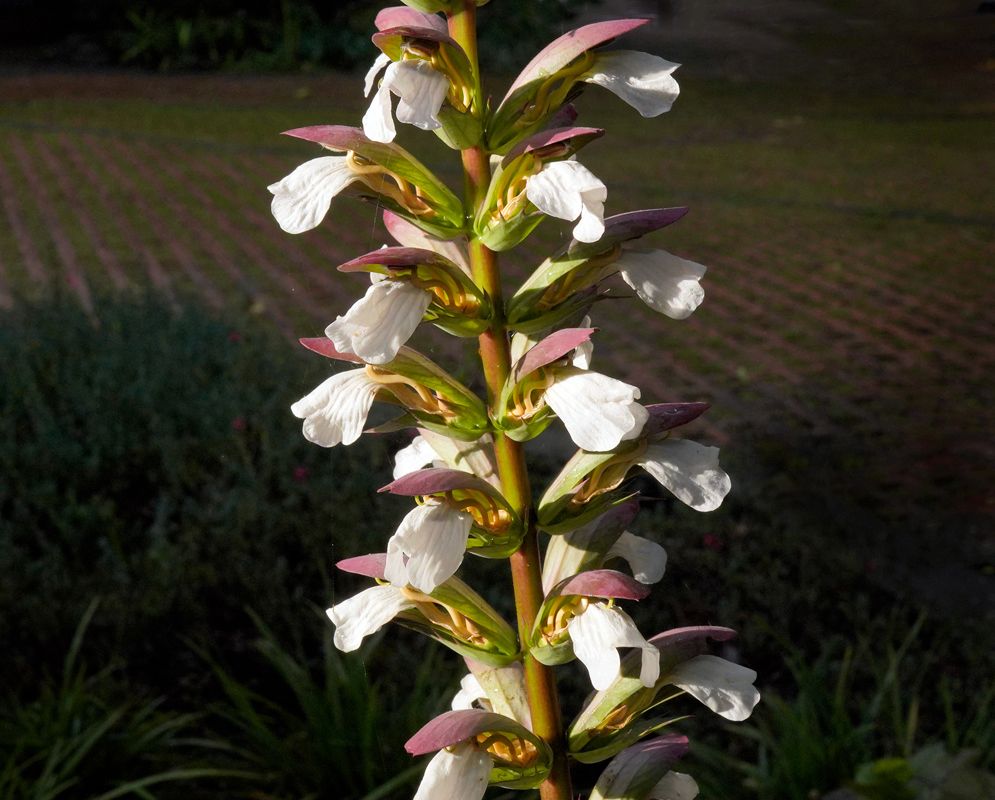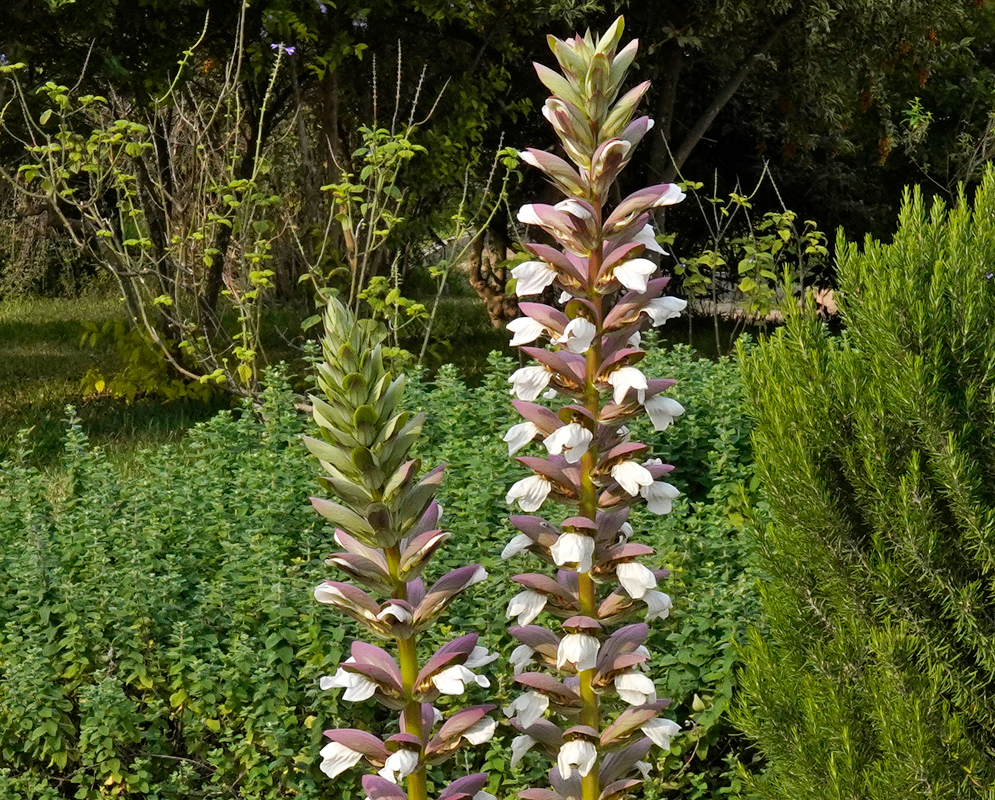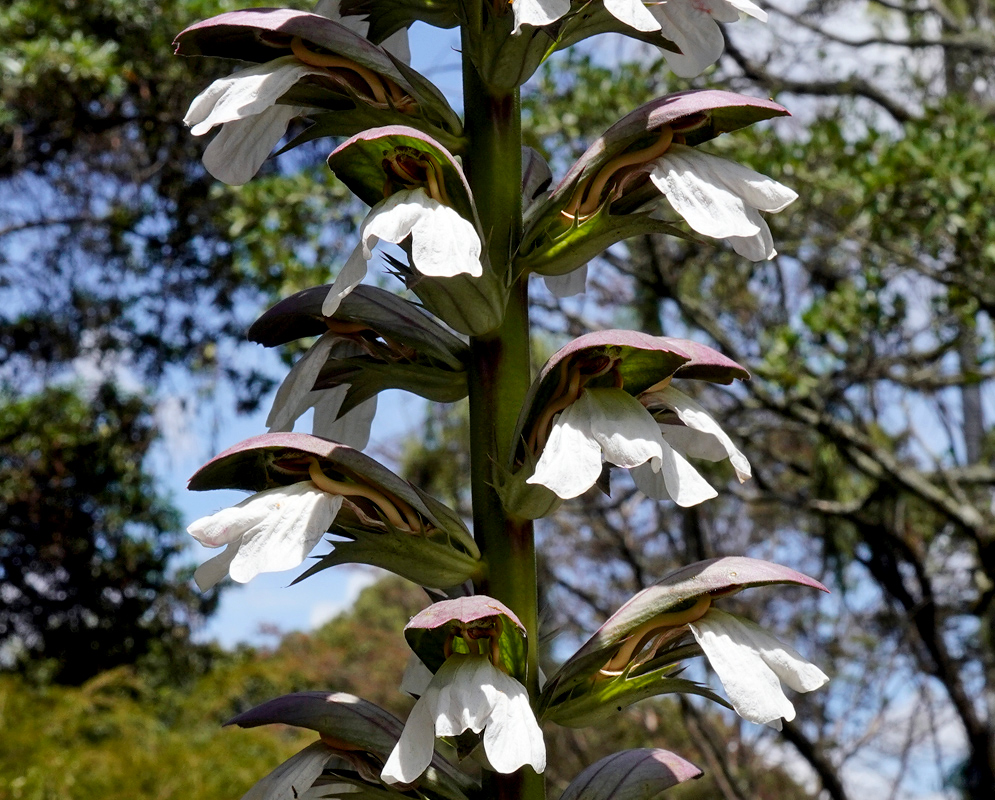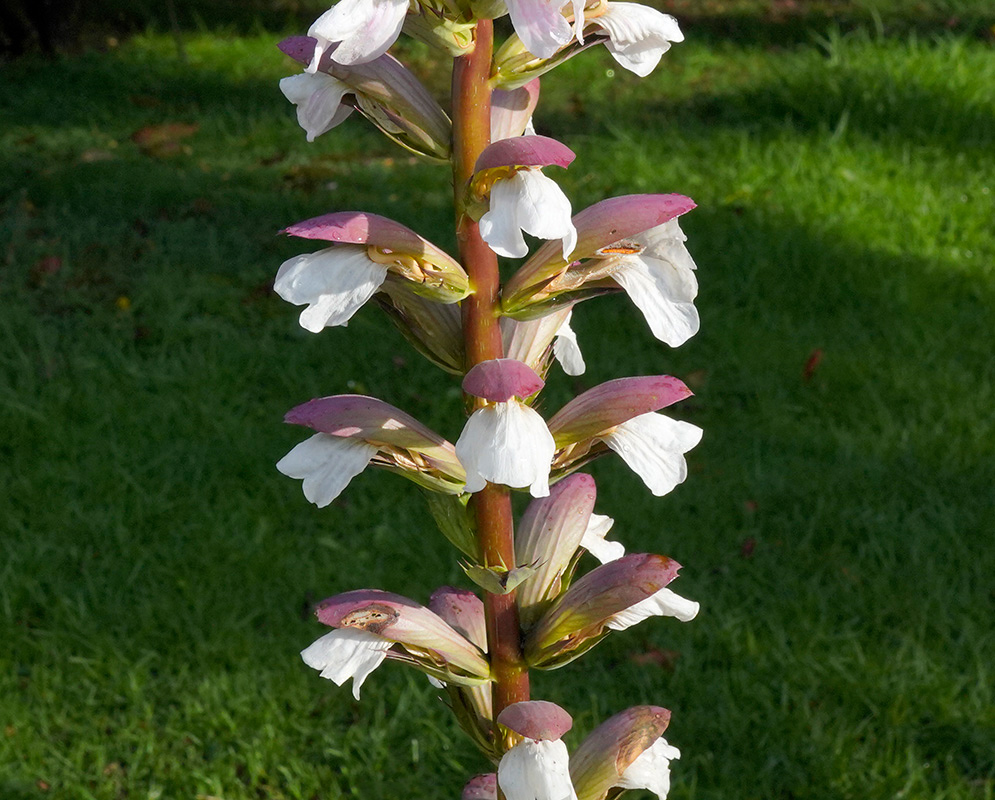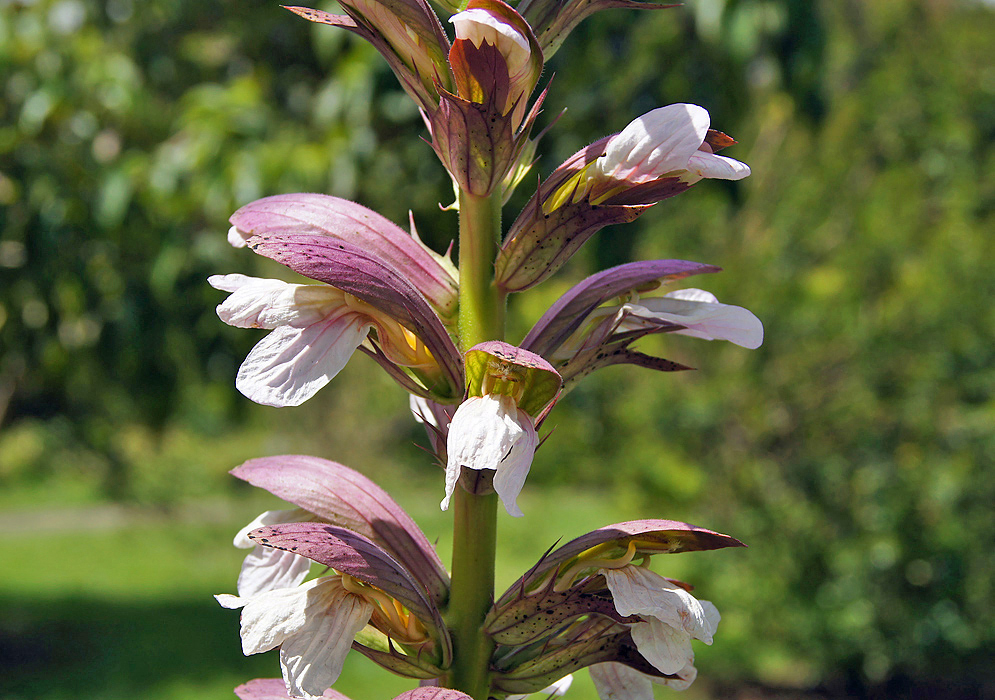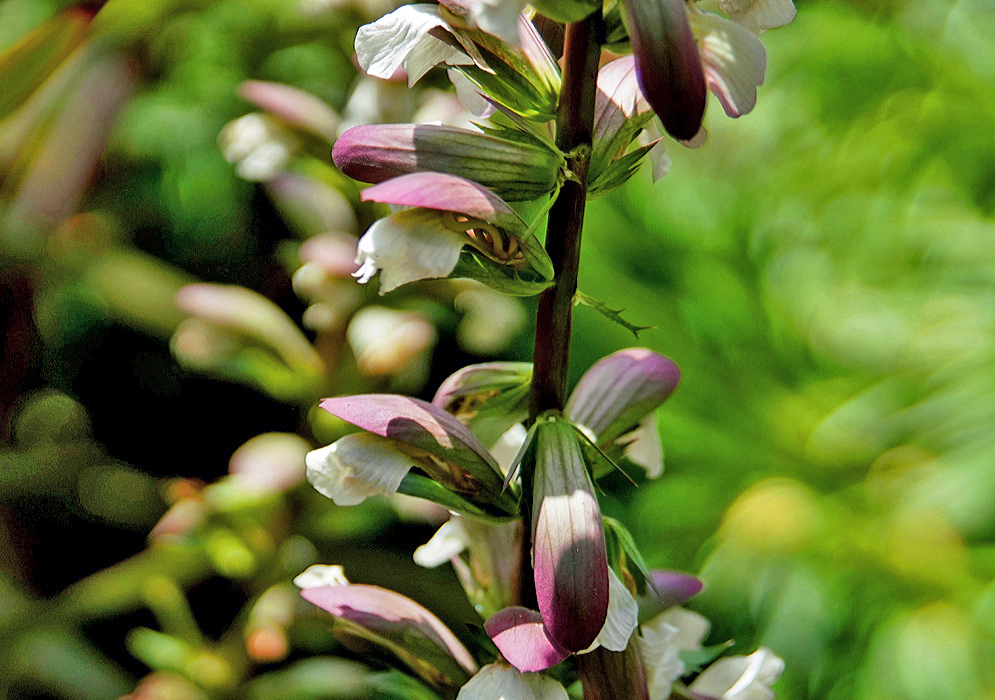This post has 11 Simple Fields-fields attached. Show fields.
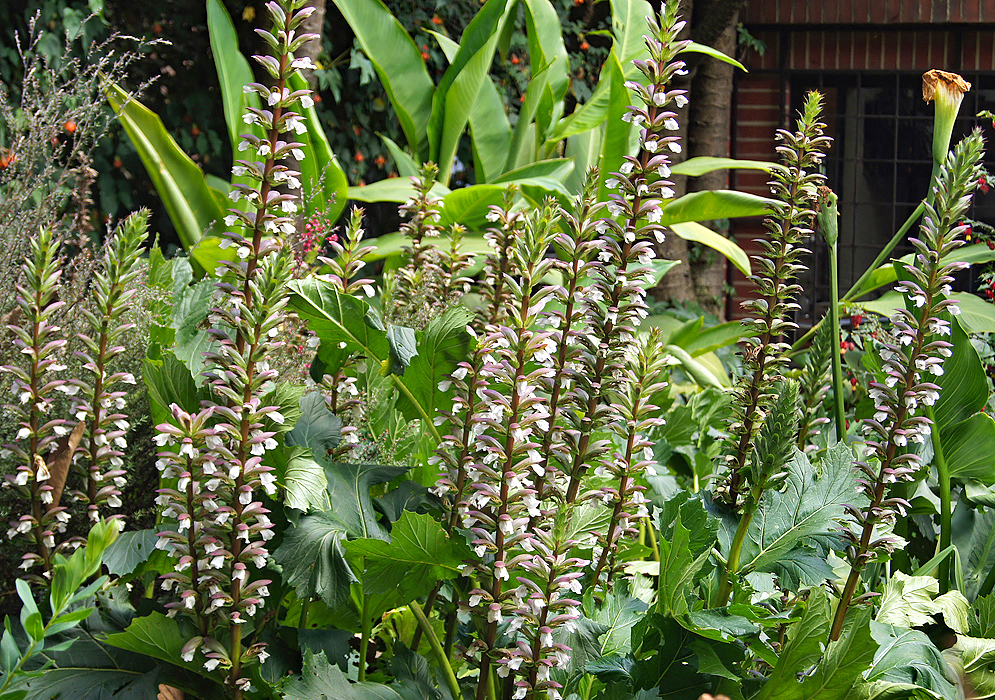
Native to the central and eastern Mediterranean, Bear's Breeches has been cultivated in gardens since ancient times and is now naturalized and widespread globally. It is seen as invasive due to its ability to form large, localized clumps that can survive for decades. The plants are usually propagated from tubers and can readily produce new plants from both seed and portions of root. The plants bear purplish and white flowers on an erect spike and are pollinated only by bees large enough to force their way into the flower to reach the nectar at the bottom of the tube. They are primarily used in gardening for their large, shiny, lobed basal leaves and long floral spikes, which lend a stately appearance. In folk medicine, the leaves have been used to stimulate appetite and act as a laxative. Externally, they are applied in the form of a poultice as an anti-inflammatory treatment for affected internal organs. The roots, which have a certain astringency, have been recommended for diarrhea and dysentery, and the juice has been used as a symptomatic treatment for herpes, burns, and general bruises due to its analgesic effect. Photographed in Bogota, Colombia and Quito, Ecuador where it can be seen in many parks and gardens.
